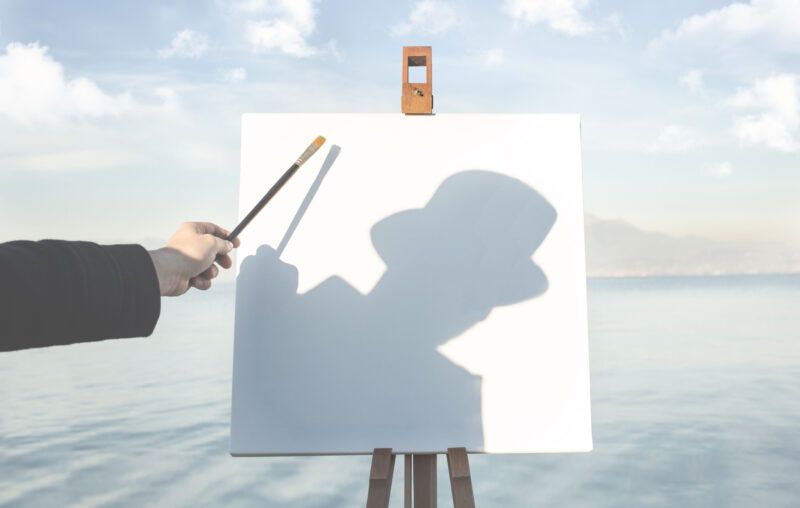Economics and the Art of Education

Politicians have long assayed education in terms of economic value. In 1994, for example, Bill Clinton told educators that they were not providing youth with the practical skills they would need for jobs. In 2015, Margaret Spellings, U.S. Secretary of Education under George W. Bush, stressed the importance of accountability in education, so that “taxpayers know what they are getting for their money” and students will be well prepared to enter the “global marketplace,” where they will be “competing with students all over the world.” Just this year, an article in Foreign Affairs deems “America’s education crisis” a “national security threat,” in part because a nation that cannot compete economically will lack the means to secure its borders against its more prosperous rivals.
On these terms, individual Americans are best understood as producers and consumers, and the American people constitute nothing so much as a workforce. The success or failure of the American experiment hinges above all on America’s economic fortunes—especially how its prosperity compares with that of other nations. Even higher education institutions themselves have bet the farm on an educational rationale grounded in economic utility. For example, the Chronicle of Higher Education recently released its report, “The Future of Work: How Colleges Can Prepare Students for the Jobs Ahead,” implying that job preparation is the principal purpose of colleges and universities. College, it seems, is about securing the skills that will be most rewarded in the labor market of the future.
Yet what if this view of education—and for that matter, of work and even life itself—is not necessarily so compelling as its advocates seem to suppose? What if there are reasons to pursue education that transcend the economic argument, and what if we need at least to consider these reasons, even if we are not finally persuaded that they are the most important, to properly appraise the purposes and significance of education? What if, in our zeal to ensure that we prepare students for the job market of the future, we risk losing sight of venerable and in fact permanent benefits of education that have nothing to do with economic competitiveness, beyond that fact that people so educated would be unlikely to regard themselves first and foremost as members of the species Homo economicus?
To explore these possibilities, I would like to turn to one of the unlikeliest of sources of insight on matters economic, the career and life of the painter Vincent Van Gogh—one of the most widely known and highly regarded painters in human history. Van Gogh never studied economics, but he acquired extensive first-hand experience in the world of buying and selling. Although he spent most of his life in urgent need of funds, he resolved never to put money or the things money can buy first in his life, and he wished to secure others against this very same trap. Van Gogh does not provide us with definitive answers about the relationship between education and economics, but he poses the questions in an especially clear and engaging way.
What might an economist make of Vincent Van Gogh? On the one hand, he never had much money and lived out many of the days in his short life in poverty. His father, a preacher, attempted to set his children on a good path, but he could not afford to support them as adults. For much of Van Gogh’s adult life, he relied on the financial support of his younger brother, Theo, who managed to succeed in a career at which Van Gogh failed utterly, that of art dealer. Painting supplies were expensive, and Van Gogh typically had little money left by which to support himself. During his lifetime, he sold perhaps a handful of paintings, and those for small sums, while his total works numbered well in excess of a thousand. At the time of his death, most would have branded him a complete failure as a commercial artist.
Yet today Van Gogh’s paintings command some of the highest prices of any artist. For example, his “Irises” sold for $54 million in 1987, his “Portrait of Joseph Roulin” for more than $58 million in 1989, his “Portrait of the Artist Sans Barbe Price” for $71 million in 1998, and his “Portrait of Dr. Gachet” brought $83 million in 1990. Many other Van Goghs have sold for millions to tens of millions of dollars. Were some of his best-known works to appear at auction—an unlikely event, in view of the fact that most are owned by museums and are not for sale—it is virtually certain that they would shatter records. In total, Van Gogh’s entire portfolio of paintings would fetch many billions of dollars, establishing him as one of the most economically successful artists in history, if not his own lifetime.
First, a few more words about Van Gogh’s life. Born in 1853 in the Netherlands, for generations the men in his family had pursued careers in the clergy or art dealing. As a young man, he went to work for his prosperous art dealer uncle, but eventually soured on it. He then attempted to enter the pastorate but failed the entrance exams for the study of theology. He then turned his attention to art, producing nearly all his 850+ oil paintings between 1885 and 1990, when he died. It is often claimed that Van Gogh never sold a painting, but this is not true. Yet there is no gainsaying the fact that only Theo’s generosity sustained him. Van Gogh seems to have suffered from mental illness, and many ascribe his death at 37 to suicide.
If Van Gogh looked at the world through the lens of economic utility, he should have done everything he could to succeed in his early career as an art dealer. He was working for his own prosperous uncle, who very much wanted him to succeed. He worked first in The Hague, then in London, and at the age of 20, his prospects appeared bright, as he was already earning more money than his father and even sending money home to his family. But over time, he became increasingly disenchanted. No doubt multiple factors were involved, including the rejection of his proposal of marriage to his landlady’s daughter and his increasing social isolation. Concerned, his uncle transferred him to Paris, but Van Gogh soon decided that he could not continue dealing art.
The underlying reason for Van Gogh’s disenchantment with the world of art dealing seems to have been his deep and growing sense of revulsion at the commodification of art. When he was working in London, he was profoundly affected by the poverty, filth, and misery of slum life by which many of his fellow Londoners were engulfed. Later, while working as a lay pastor in a poor, coal-mining part of Belgium, he was struck by the plight of the downtrodden, whose mean existence he captured in drawings. He found equally moving the novels of Charles Dickens and prints of Gustave Dore, which powerfully conveyed an unmistakable sense of dignity amid the grit and grime. Van Gogh became convinced that the purpose of life cannot be the pursuit of money.
As he turned to painting, he wrote that he would strive to create works of art “for the people.” He was not entirely indifferent to money and certainly wished to become not only self-sufficient but successful. Yet what mattered most to him was not what price others would pay for his art but whether it accurately reflected the way the world really is. He wrote, “I cannot change the fact that my paintings do not sell. But the time will come when people recognize that they are worth more than the paints used in them.” Above all, the poor and suffering would be able to see in his art their own reflection—not just the grittiness of their lives but their essential humanity, which is more likely to be hidden and distorted than accentuated by riches.
Van Gogh believed that most people exist in a kind of prison of thought and feeling, which severely limits the depth of relationship we can enter with one another. People see one another primarily in terms of utility, the uses to which we can be put. But he sees a way out of this cage, a possibility for liberation:
Do you know what makes the prison disappear? Every deep, genuine affection. Being friends, being brothers, loving, that is what opens the prison, with supreme power, by some magic force. Without these, one stays dead. But whenever affection is revived, there life revives.
Van Gogh sought through his art to throw open the prison doors and liberate those trapped in a mode of life that regards others strictly in terms of economic value.
Van Gogh would be astonished by the vast sums his paintings command today. I suspect that he might also be more than a little abashed. For he thought that the value of his art lay less in the price it could bring at auction than its capacity to enhance our recognition, respect, and love for our fellow human beings, especially the suffering. At his best, he was not giving the market what it wanted but sharing with others his sense of life’s real meaning. Once we looked at the world through the lens of one of his paintings, he thought, we could see it anew, as if for the first time. “Painters,” he wrote, “understand nature and love it, and teach us to see.” This would be Van Gogh’s greatest gift, to teach us to see the world and those who inhabit it for what we really are.
Van Gogh knew scarcity well, but he also understood the difference between economic and artistic views of life. The economic view begins with scarcity and presumes that the primary mode of transfer is exchange, each party giving up something to get something from the other. On such a model, were one party to give something as a gift to the other, the first party would be diminished, no longer possessing the resource given. When someone gives money to someone else, the giver’s net worth declines by exactly this amount. And the same applies to economic transactions, including the kinds of transactions to which artists, art dealers, and art purchasers are often parties. The art buyer gives up a certain amount of money, and the artist and art dealer give up the work of art itself.
From an artistic point of view, things look very different. Artists, at least as Van Gogh conceives of them, are not wage laborers or piece workers. They create not so that they can extract a certain amount of money from a customer, but because they have something to give. Whether artists’ works are selling or not, they have no choice but to continue creating, sharing their vision. He wrote, “For me, work is an absolute necessity. I cannot put it off.” To Van Gogh, to talk about the selling prices of real works of art was not only distasteful but a betrayal of a higher purpose.
The traditional economic perspective presumes that we interact because we want something from each other. In a typical transaction, one person offers a good or service and the other offers money, and a deal is struck. Both parties enter the encounter feeling they lack something the other has. But Van Gogh sees the artist entering the encounter with a sense of plenitude. He writes, “It is good to love many things, for therein lies the true strength, and whoever loves much performs much and can accomplish much, and what is done in love is well done.” From Van Gogh’s perspective, an artist is a lover, or at least someone who gives out of love. Artists give their best because they want the best for their beloved, and in giving and receiving well, both artist and those who behold the art are enriched.
From his first inklings of the true nature of art to his immersion in it as a painter, Van Gogh found the whole notion of buying and selling art increasingly poisonous. When a gift is given in generosity and received with gratitude, it tends to create a relationship between people. When such a work of art is regarded as a commodity, it creates no such relationship. In fact, by doing profound injury to the human part that longs for something more, it creates a sense of frustration and even betrayal. Would we talk about buying and selling our children, who we do not really own? How then can we talk about striking bargains over the gifts of an artist? To suppose that works of art can be bought and sold is, from Van Gogh’s point of view, to commit a category mistake.
From an economic perspective, the last thing people should want to do is to give things away. Doing so both diminishes the worth of givers and diminishes their capacity, going forward, to get what they want. But the artist sees matters quite differently. As artists develop, they feel increasingly called to give themselves away. They can sell their shoes, their chairs, and their pipes, but they cannot really sell their art, which at its highest and truest level can only be offered. Artists of Van Gogh’s ilk are not calculating in their heads, asking should I give or not, and what would it take in the way of money to get me to do so? Instead, they are graciously accepting whatever opportunities come their way to express and share the best that is in them, which they discover primarily in the sharing.
Those operating from a purely market-oriented frame of mind do not and cannot get it. They suppose that getting and spending represents the supreme expression of human powers. But there is a fire of much greater intensity burning in the heart of the artist, who longs for nothing more than to offer it up. When such sharing is rendered impossible, largely because so many people are operating in a purely buying and selling frame of mind, the artist cannot help but feel cheated. In Van Gogh’s words, “Someone has a great fire in his soul, and nobody ever comes to warm themselves at it, and passers-by see nothing but a little smoke at the top of the chimney and go on their way.” The artist longs most deeply for something money could never provide.
Continue reading at EconLib










